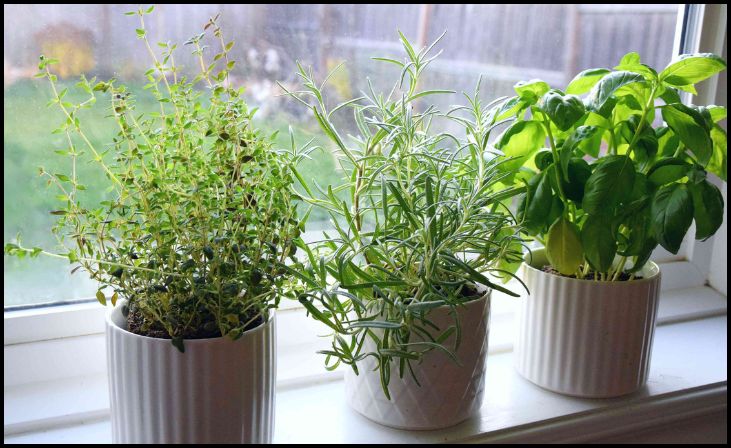Herb gardens are not only beautiful additions to any landscape but also provide fresh ingredients for cooking, natural remedies, and aromatic fragrances. Whether you have a spacious backyard or a small balcony, there are countless creative ways to design your herb garden. In this article, we’ll explore ten herb garden layout ideas to inspire your green thumb.
1. Stack Your Herbs in Clay Containers

Terra-cotta clay pots are excellent for herb gardening due to their rapid drying and good drainage properties. Stack these pots to create a vertical herb garden, ideal for Mediterranean herbs like thyme, sage, oregano, and rosemary. This layout saves space and adds visual interest to your garden.
2. Mix Veggies + Herbs in the Garden
Combine herbs with vegetables in your garden for a functional and visually appealing layout. Create raised cedar wood veggie beds and intersperse them with potted herbs like parsley, kale, basil, and chives. This integration maximizes space and creates a diverse and productive garden.
3. Upcycle an Herb Garden
Repurpose old containers like wine crates or wooden boxes to create charming herb gardens. Line these containers with plastic or fabric and fill them with potting soil to accommodate herb plants. Not only does this layout add rustic charm to your garden, but it also demonstrates eco-friendly gardening practices.
4. Plant Herbs on a Wall
If space is limited, consider vertical gardening by planting herbs on a wall or trellis. Use hanging pots, wall-mounted planters, or vertical garden systems to grow herbs like mint, basil, and cilantro. This innovative layout maximizes vertical space and adds a decorative element to your outdoor or indoor space.
5. Tuck Herbs in With Perennials
Integrate herbs with perennial flowers to create a vibrant and aromatic garden bed. Combine culinary herbs like thyme, chives, and sage with flowering perennials like agapanthus, phlox, and daylilies. This symbiotic relationship attracts pollinators, adds fragrance to your garden, and provides a steady supply of fresh herbs for cooking.
6. Plant a Sink-ful of Herbs

Repurpose an old garden sink on a stand to create a unique and ergonomic herb garden. The elevated height of the sink reduces the need for bending, making it convenient for gardening tasks. Fill the sink with potting soil and plant herbs like lavender, rosemary, and mint for a functional and decorative display.
7. Use Your Herb Harvest for Gifts, Beverages, or Marinades
A bountiful herb garden provides an abundance of fresh ingredients that can be used in various ways. Utilize your herb harvest to create homemade herb blends for gifts, infuse them into beverages like herbal teas or cocktails, or incorporate them into marinades for meats and vegetables. This sustainable practice adds value to your garden produce and encourages creativity in the kitchen.
8. Plant a Specialty Garden
Design a specialty herb garden tailored to your culinary preferences. If you’re a fan of Italian cuisine, create a pizza garden with herbs like oregano, basil, thyme, and sage. For Mexican-inspired dishes, grow cilantro, oregano, parsley, and marjoram. This customized layout ensures you have fresh herbs on hand for your favorite recipes.
9. Plant a Pot of Picnic Herbs
Create a portable herb garden in a large pot or planter filled with a variety of herbs. This “picnic herb garden” can be placed on your patio, balcony, or picnic table for easy access during outdoor gatherings. Herbs like basil, parsley, cilantro, and dill add flavor and freshness to grilled dishes, salads, and beverages.
10. Make a Raised Bed of Herbs

Construct a raised bed garden specifically for growing herbs, allowing for better soil drainage and easier access to plants. Fill the raised bed with a mix of herbs such as thyme, oregano, chives, parsley, and rosemary. This organized layout optimizes space and makes it convenient to tend to your herb garden.



